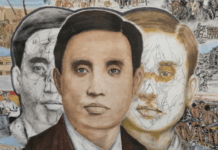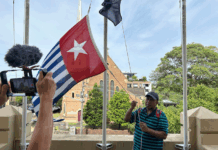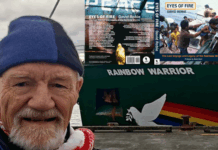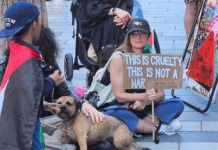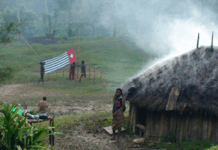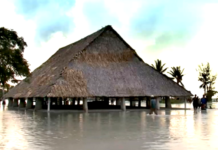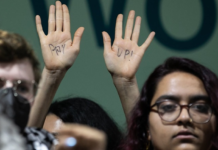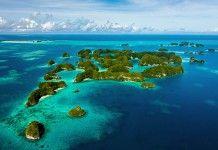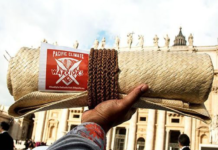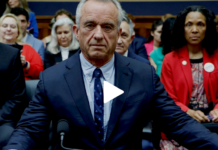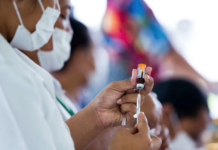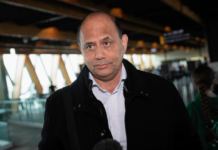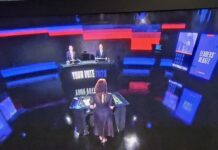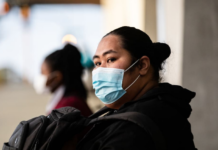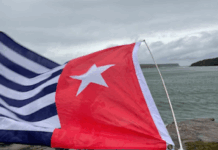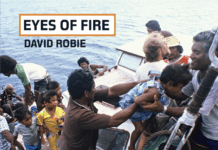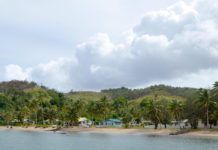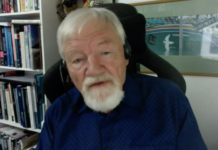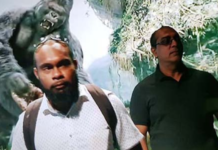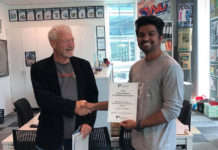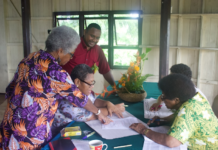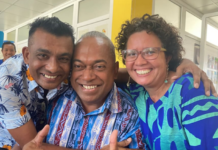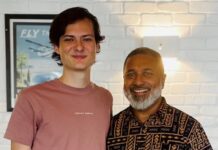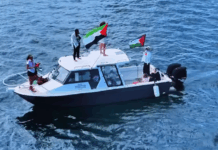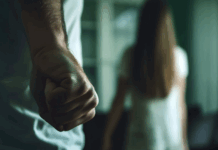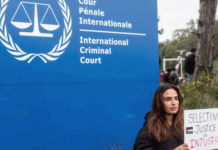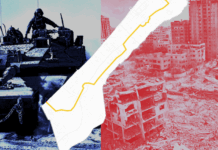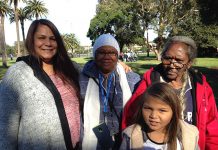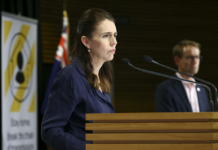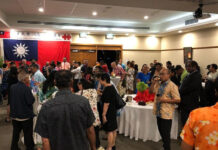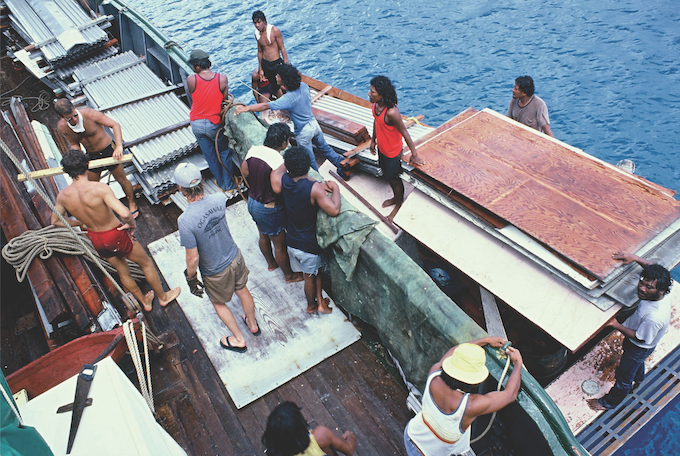
The second of a two-part series on the historic Rongelap evacuation of 300 Marshall islanders from their irradiated atoll with the help of the Greenpeace flagship Rainbow Warrior crew and the return of Rainbow Warrior III 40 years later on a nuclear justice research mission. Journalist and author David Robie, who was on board, recalls the 1985 voyage.
SPECIAL REPORT: By David Robie
Mejatto, previously uninhabited and handed over to the people of Rongelap by their close relatives on nearby Ebadon Island, was a lot different to their own island. It was beautiful, but it was only three kilometres long and a kilometre wide, with a dry side and a dense tropical side.
A sandspit joined it to another small, uninhabited island. Although lush, Mejatto was uncultivated and already it was apparent there could be a food problem.Out on the shallow reef, fish were plentiful.
Shortly after the Rainbow Warrior arrived on 21 May 1985, several of the men were out wading knee-deep on the coral spearing fish for lunch.
- READ MORE: Marshall Islands: How the Greenpeace Rongelap evacuation changed the course of history
- Eyes of Fire — the Rongelap evacuation story microsite — David Robie
- Part 1 of the series
- Other Rongelap reports
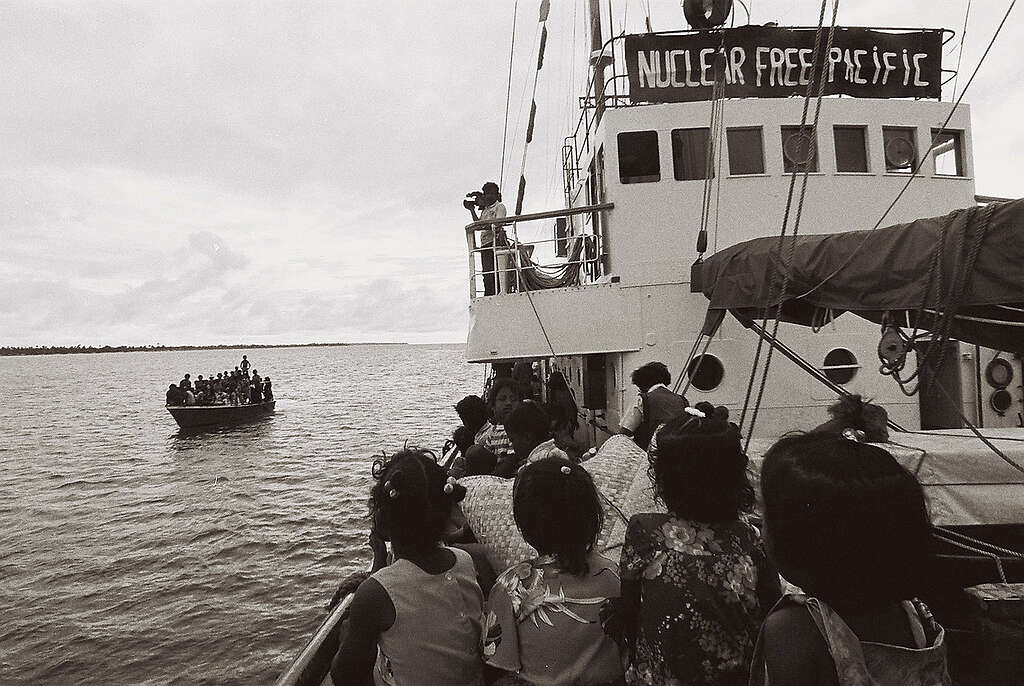
But even the shallowness of the reef caused a problem. It made it dangerous to bring the Warrior any closer than about three kilometres offshore — as two shipwrecks on the reef reminded us.
The cargo of building materials and belongings had to be laboriously unloaded onto a bum bum (small boat), which had also travelled overnight with no navigational aids apart from a Marshallese “wave map’, and the Zodiacs. It took two days to unload the ship with a swell making things difficult at times.
An 18-year-old islander fell into the sea between the bum bum and the Warrior, almost being crushed but escaping with a jammed foot.
Fishing success on the reef
The delayed return to Rongelap for the next load didn’t trouble Davey Edward. In fact, he was celebrating his first fishing success on the reef after almost three months of catching nothing. He finally landed not only a red snapper, but a dozen fish, including a half-metre shark!
Edward was also a good cook and he rustled up dinner — shark montfort, snapper fillets, tuna steaks and salmon pie (made from cans of dumped American aid food salmon the islanders didn’t want).
Returning to Rongelap, the Rainbow Warrior was confronted with a load which seemed double that taken on the first trip. Altogether, about 100 tonnes of building materials and other supplies were shipped to Mejatto. The crew packed as much as they could on deck and left for Mejatto, this time with 114 people on board. It was a rough voyage with almost everybody being seasick.
The journalists were roped in to clean up the ship before returning to Rongelap on the third journey.
‘Our people see no light, only darkness’
Researcher Dr Glenn Alcalay (now an adjunct professor of anthropology at William Paterson University), who spoke Marshallese, was a great help to me interviewing some of the islanders.
“It’s a hard time for us now because we don’t have a lot of food here on Mejatto — like breadfruit, taro and pandanus,” said Rose Keju, who wasn’t actually at Rongelap during the fallout.
“Our people feel extremely depressed. They see no light, only darkness. They’ve been crying a lot.
“We’ve moved because of the poison and the health problems we face. If we have honest scientists to check Rongelap we’ll know whether we can ever return, or we’ll have to stay on Mejatto.”
Kiosang Kios, 46, was 15 years old at the time of Castle Bravo when she was evacuated to “Kwaj”.
“My hair fell out — about half the people’s hair fell out,” she said. “My feet ached and burned. I lost my appetite, had diarrhoea and vomited.”
In 1957, she had her first baby and it was born without bones – “Like this paper, it was flimsy.” A so-called ‘jellyfish baby’, it lived half a day. After that, Kios had several more miscarriages and stillbirths. In 1959, she had a daughter who had problems with her legs and feet and thyroid trouble.
Out on the reef with the bum bums, the islanders had a welcome addition — an unusual hardwood dugout canoe being used for fishing and transport. It travelled 13,000 kilometres on board the Rainbow Warrior and bore the Sandinista legend FSLN on its black-and-red hull. A gift from Bunny McDiarmid and Henk Haazen, it had been bought for $30 from a Nicaraguan fisherman while they were crewing on the Fri. (Bunny and Henk are on board Rainbow Warrior III for the research mission).
“It has come from a small people struggling for their sovereignty against the United States and it has gone to another small people doing the same,” said Haazen.
Animals left behind
Before the 10-day evacuation ended, Haazen was given an outrigger canoe by the islanders. Winched on to the deck of the Warrior, it didn’t quite make a sail-in protest at Moruroa, as Haazen planned, but it has since become a familiar sight on Auckland Harbour.
With the third load of 87 people shipped to Mejatto and one more to go, another problem emerged. What should be done about the scores of pigs and chickens on Rongelap? Pens could be built on the main deck to transport them to Mejatto but was there any fodder left for them?
The islanders decided they weren’t going to run a risk, no matter how slight, of having contaminated animals with them. They were abandoned on Rongelap — along with three of the five outriggers.
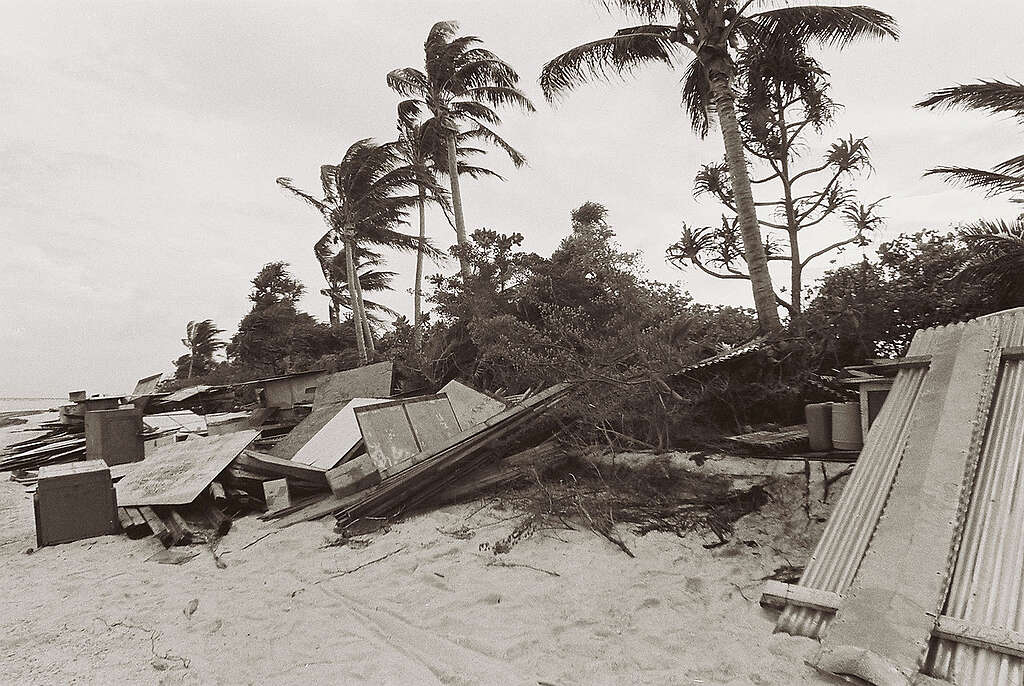
“When you get to New Zealand you’ll be asked have you been on a farm,” warned French journalist Phillipe Chatenay, who had gone there a few weeks before to prepare a Le Point article about the “Land of the Long White Cloud and Nuclear-Free Nuts”.
“Yes, and you’ll be asked to remove your shoes. And if you don’t have shoes, you’ll be asked to remove your feet,” added first mate Martini Gotjé, who was usually barefooted.
The last voyage on May 28 was the most fun. A smaller group of about 40 islanders was transported and there was plenty of time to get to know each other.
Four young men questioned cook Nathalie Mestre: where did she live? Where was Switzerland? Out came an atlas. Then Mestre produced a scrapbook of Fernando Pereira’s photographs of the voyage. The questions were endless.
They asked for a scrap of paper and a pen and wrote in English:
“We, the people of Rongelap, love our homeland. But how can our people live in a place which is dangerous and poisonous. I mean, why didn’t those American people test Bravo in a state capital? Why? Rainbow Warrior, thank you for being so nice to us. Keep up your good work.”
Each one wrote down their name: Balleain Anjain, Ralet Anitak, Kiash Tima and Issac Edmond. They handed the paper to Mestre and she added her name. Anitak grabbed it and wrote as well: “Nathalie Anitak”. They laughed.
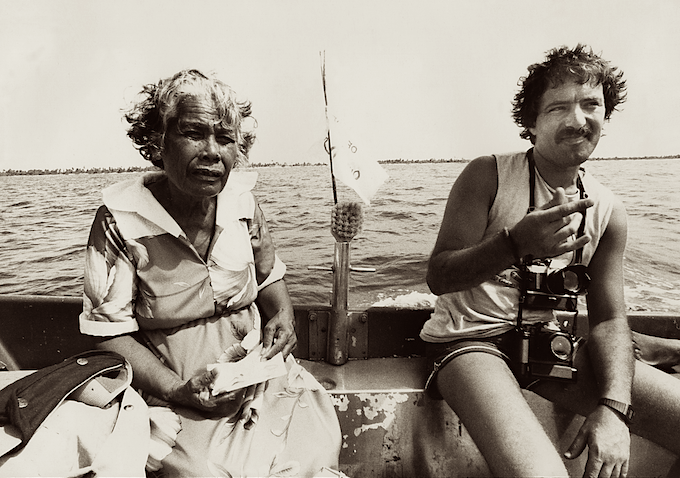
Fernando Pereira’s birthday
Thursday, May 30, was Fernando Pereira’s 35th birthday. The evacuation was over and a one-day holiday was declared as we lay anchored off Mejato.
Pereira was on the Pacific voyage almost by chance. Project coordinator Steve Sawyer had been seeking a wire machine for transmitting pictures of the campaign. He phoned Fiona Davies, then heading the Greenpeace photo office in Paris. But he wanted a machine and photographer separately.
“No, no … I’ll get you a wire machine,” replied Davies. ‘But you’ll have to take my photographer with it.” Agreed. The deal would make a saving for the campaign budget.
Sawyer wondered who this guy was, although Gotjé and some of the others knew him. Pereira had fled Portugal about 15 years before while he was serving as a pilot in the armed forces at a time when the country was fighting to retain colonies in Angola and Mozambique. He settled in The Netherlands, the only country which would grant him citizenship.
After first working as a photographer for Anefo press agency, he became concerned with environmental and social issues. Eventually he joined the Amsterdam communist daily De Waarheid and was assigned to cover the activities of Greenpeace. Later he joined Greenpeace.
Although he adopted Dutch ways, his charming Latin temperament and looks betrayed his Portuguese origins. He liked tight Italian-style clothes and fast sports cars. Pereira was always wide-eyed, happy and smiling.
In Hawai`i, he and Sawyer hiked up to the crater at the top of Diamond Head one day. Sawyer took a snapshot of Pereira laughing — a photo later used on the front page of the New Zealand Times after his death with the bombing of the Rainbow Warrior by French secret agents.
While most of the crew were taking things quietly and the “press gang” caught up on stories, Sawyer led a mini-expedition in a Zodiac to one of the shipwrecks, the Palauan Trader. With him were Davey Edward, Henk Haazen, Paul Brown and Bunny McDiarmid.
Clambering on board the hulk, Sawyer grabbed hold of a rust-caked railing which collapsed. He plunged 10 metres into a hold. While he lay in pain with a dislocated shoulder and severely lacerated abdomen, his crewmates smashed a hole through the side of the ship. They dragged him through pounding surf into the Zodiac and headed back to the Warrior, three kilometres away.
“Doc” Andy Biedermann, assisted by “nurse” Chatenay, who had received basic medical training during national service in France, treated Sawyer. He took almost two weeks to recover.
But the accident failed to completely dampen celebrations for Pereira, who was presented with a hand-painted t-shirt labelled “Rainbow Warrior Removals Inc”.
Pereira’s birthday was the first of three which strangely coincided with events casting a tragic shadow over the Rainbow Warrior’s last voyage.
Dr David Robie is an environmental and political journalist and author, and editor of Asia Pacific Report. He travelled on board the Rainbow Warrior for almost 11 weeks. This article is adapted from his 1986 book, Eyes of Fire: The Last Voyage of the Rainbow Warrior. A new edition is being published in July to mark the 40th anniversary of the bombing.


